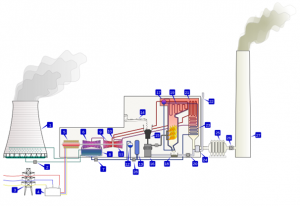If you’ve ever siphoned beer into bottles from a home-brew tub, you’ve used vacuum conveying – the weight of falling beer creates vacuum pressure in the tube that pulls more beer from the tub. In an industrial context it’s a little more complicated, but the number of pieces of equipment isn’t much greater than you used for your home brew, a key advantage of pneumatic conveying.
Essentially you have a pump and a tube, with material at one end and a container to receive it at the other. A vacuum conveyor uses a pump that sucks instead of blows (it uses “negative pressure”). Your inventory will also include a few valves, dust collectors and monitoring equipment, but that’s about it. That’s not many parts to go wrong.
Can Your Material be Pneumatically Conveyed?
Thousands of chemicals, foodstuffs, and minerals are pneumatically conveyed – they’re usually fairly dry (under 20% moisture) with particles under 50mm. Pressure driven tubes can be 300m long, vacuum ones less.
Should You Blow or Suck?
Three common reasons for choosing vacuum are to reliably contain the material (protecting material, environment and workforce), because the material can stick or clump (vacuum tends to pull clumps apart), or because you’ll be drawing from numerous containers but delivering to one destination, for example from a succession of trucks (pressure is more convenient for drawing from one silo but switching destinations).
Will the Material Require a Dilute or Dense Phase Setup?
Dilute means the ratio of material to air is lower and air blows faster. 85% of conveyors run dilute, but the precise equipment and settings to maximise throughput depend on many qualities and quantities. Both heavy (over 55 lb/cu ft) and light materials (under 25 lb/cu ft) may need larger vacuum receivers, because the latter needs filters. Fragile or abrasive materials need gentler speeds, and there are exceptions – cement is heavy but flows well.
You need to have an idea of pressure, air-flow, and horsepower calculations, but leave the design to an experienced company with a portfolio of previous projects, such as http://www.aptech.uk.com/pneumatic-conveying/vacuum-conveying/. Calculations also depend on layout (runs, elevations, elbows), and even the altitude of your factory.
The supplier will also discuss with you the metering and control equipment – multi-component system microprocessors (MPC) and programmable logic controls (PLC) enable automation or centralised control.

